Are you a Project Owner/ General Contractor using BIM?
Building Information Models (BIM) are underutilized in many projects limited to only design phase. After putting so much time, effort and money, why not use BIM to deliver projects on time, within budget and with quality?
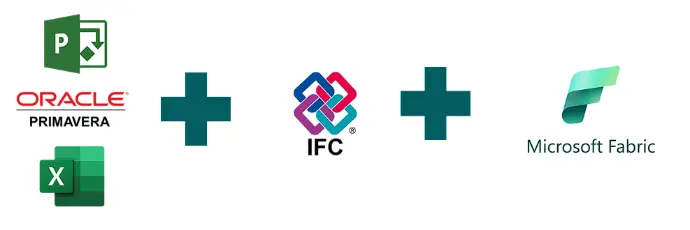
Building and managing the virtual replica of your project in four steps
1
BIM Model
Do you have a BIM model developed for the project?
2
Work Breakdown Structure (WBS)
Do you have a schedule developed for the project?
3
Cost Breakdown Structure (CBS)
Do you have a cost developed for the project?
4
Analytics
Do you have inhouse Analytics capabilities?
Not just for Buildings; But for infrastructure projects too

Federate different trades of BIM models
Federating BIM files of different trades involves combining models from various disciplines—such as architectural, structural, MEP, and civil—into a single, coordinated environment. This process allows teams to detect clashes, validate spatial coordination, and ensure alignment across trades before construction begins. Federated models enhance collaboration, reduce rework, and improve decision-making by providing a holistic view of the entire project in one place.

Analyze "Information" in the BIM Model
In Building Information Modeling (BIM), "Information" is the core component that distinguishes BIM from traditional 2D CAD systems. BIM models are not just 3D geometric representations of buildings—they are rich data environments that integrate geometry, spatial relationships, geographic information, and detailed attributes of building components.
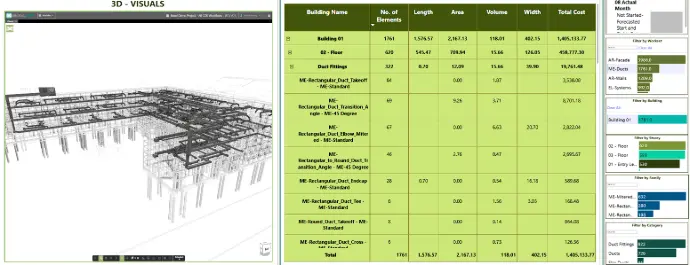
Ensure BIM follows IS 19650/ organizational guidelines
Ensuring that BIM implementation follows IS/ISO 19650 and internal organizational guidelines is essential for maintaining consistency, quality, and data integrity across project lifecycles. Aligning your BIM processes with these standards—while also incorporating company-specific protocols—ensures smoother collaboration, better risk management, and compliance with both industry and client expectations.
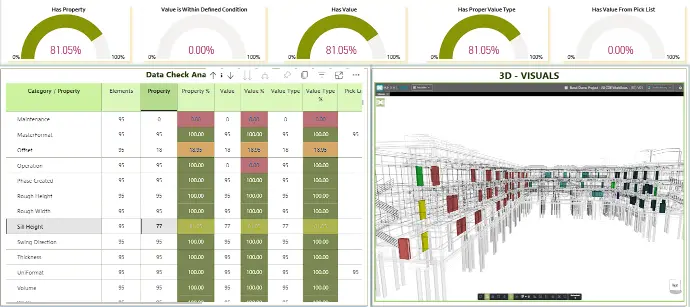
Identify and Resolve BIM Clashes
Identifying and resolving clashes in a BIM environment is a critical step in ensuring design coordination and constructability. By running clash detection on federated models (architectural, structural, MEP, etc.), teams can automatically identify conflicts—such as overlapping elements or spatial misalignments—before construction begins. These clashes are categorized (hard, soft, or workflow-related), prioritized, and assigned to relevant stakeholders for resolution. Resolving clashes early reduces costly on-site rework, minimizes delays, and enhances overall project efficiency through proactive collaboration and communication.
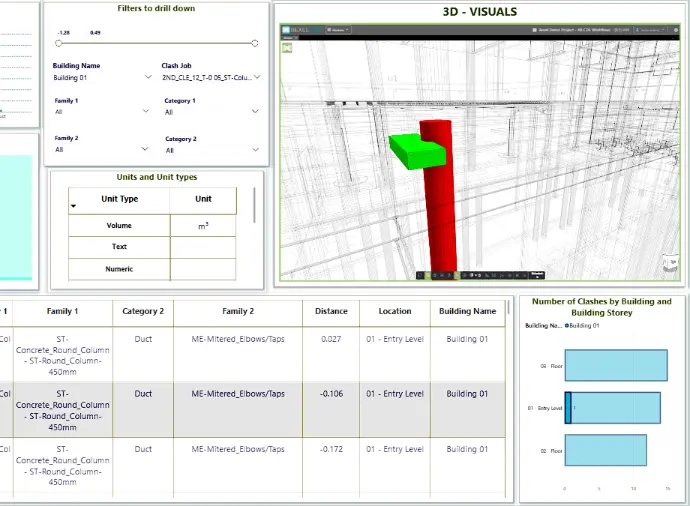
Visualize and Estimate Quantities and Cost
While Tender Quantities are essential for commercial processes, BIM Quantities offer a more transparent, real-time, and coordinated view ideal for ongoing project management and cost control. A hybrid approach often delivers the best value. Compare the BIM quantities with the contract Bill of Quantities. Improves quantity reconciliation by 60%
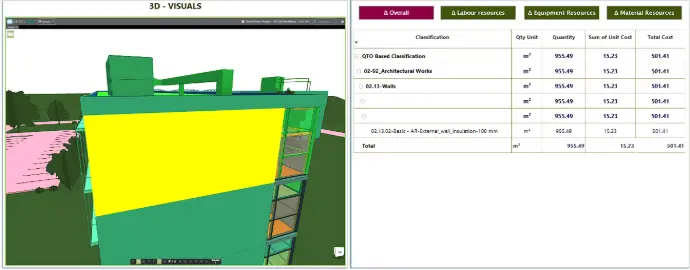
Procurement Planning with BIM
We leverage BIM to streamline procurement by linking model data to material quantities, specifications, and timelines. This enables accurate cost estimation, early identification of procurement needs, and just-in-time delivery scheduling—reducing waste, avoiding delays, and ensuring smoother construction workflows.
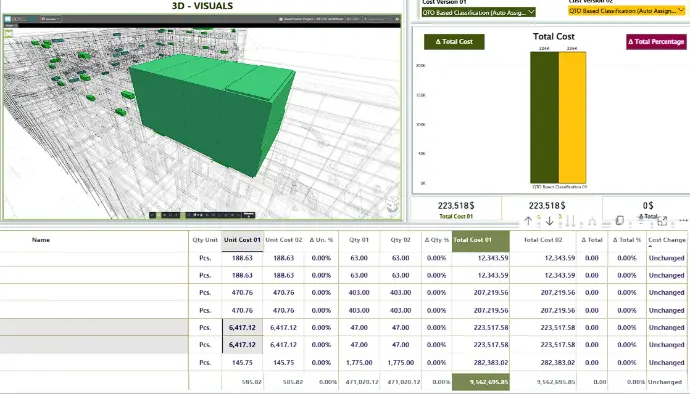
Integrate Project Schedule and BIM (MS Project/ Primavera)
Automating schedule creation through BIM isn't just a technical advantage—it's a strategic upgrade that helps reduce risks, align teams, and deliver projects on time and on budget. Create a project schedule directly from the information models. Saves time by 45%. Integrate with scheduling packages like MS Project or Primavera.
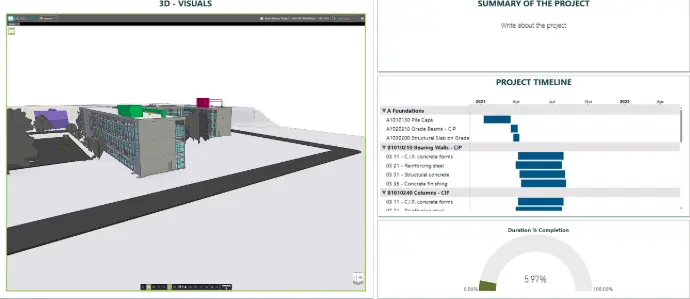
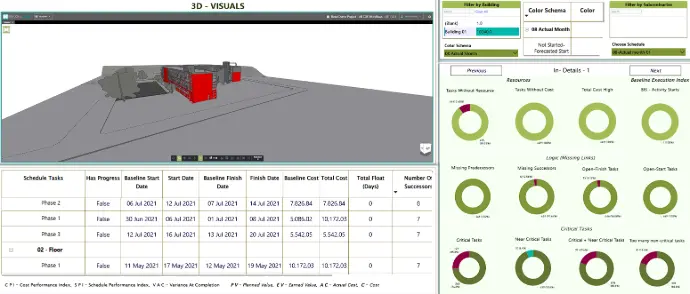
Visualize Critical Activities on BIM
Visualizing critical activities on a BIM model allows project teams to clearly identify and focus on the tasks that directly impact the project timeline. By linking the construction schedule to the 3D model, critical path elements can be highlighted and tracked visually, enabling better coordination, faster decision-making, and proactive delay mitigation. This approach transforms complex schedules into intuitive visuals, making it easier for all stakeholders to understand and manage time-sensitive work.

Create and Visualize the Look Ahead Plans
Integrate your construction schedule with BIM to visualize weekly or monthly look-ahead plans directly within the model. This enhances team coordination by showing planned activities in 3D, identifying potential clashes, and ensuring all stakeholders are aligned on upcoming tasks and timelines.
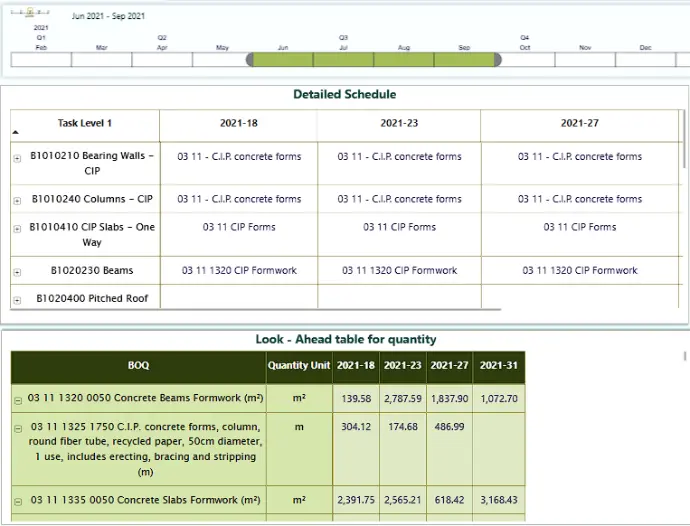
Simulate and Visualize Project Plan, Scenarios, KPIs
Simulating a project plan by integrating BIM with the schedule creates a powerful 4D construction sequence visualization. By linking model elements to scheduled tasks (from tools like Primavera P6 or MS Project), teams can simulate construction progress over time. This allows stakeholders to visually understand the planned sequence of activities, identify potential bottlenecks, optimize resource allocation, and validate buildability.
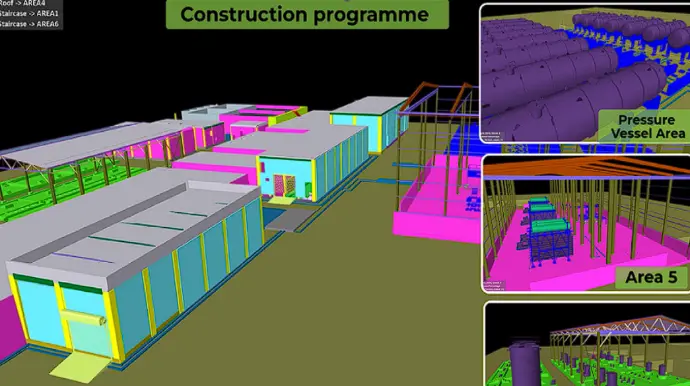
Visualize and Analyze Plan vs Actual Schedule Progress
Compare planned schedules with actual on-site progress through BIM visualization. By integrating construction timelines both baseline and actual with the model, we help you identify delays, track completed work, and analyze deviations—enabling proactive decision-making and improved project control.
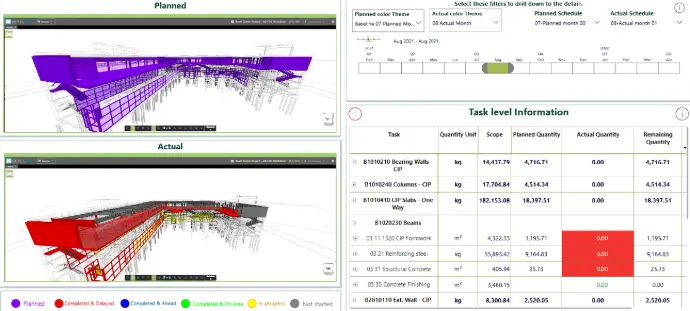
Visualize and Analyze Project Delays with Color Codes
Delay analysis with color codes on BIM visually highlights the impact of schedule delays directly on the 3D model, making it easier to understand and communicate time-related issues. By linking BIM with project scheduling tools (like Primavera or MS Project), delayed activities can be color-coded—such as red for delayed, yellow for at-risk, and green for on-track—to provide instant visual feedback. This helps planners and project managers quickly identify problem areas, understand the spatial context of delays, and take informed corrective actions, all while enhancing stakeholder transparency.
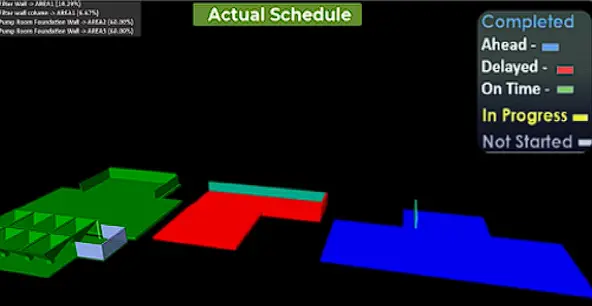
Validate and certify contract claims
Building Information Modeling (BIM) enhances the accuracy and efficiency of Interim Payment Certificates (IPCs) in construction. It provides visual progress tracking, accurate quantity measurements, and real-time updates, helping ensure payments reflect actual work completed. This improves transparency and reduces disputes during the certification process.
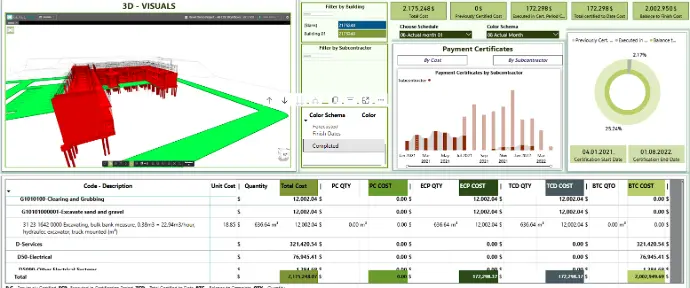
BIM Earned Value Analysis
Track project performance in real time by integrating Earned Value Analysis (EVA) with BIM. By linking cost and schedule data to model elements, we enable dynamic monitoring of planned vs. actual progress, helping you visualize cost efficiency, identify delays, and make informed decisions to keep your project on track.
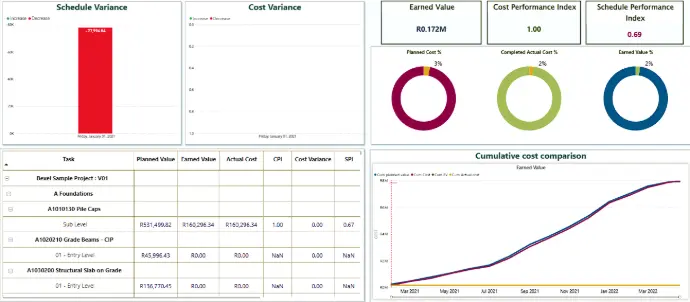
Realistic Simulations
Experience the power of 4D BIM by integrating your project model with the construction schedule. Our realistic simulations visualize each stage of construction over time, helping teams plan ahead, detect conflicts, and communicate clearly with all stakeholders. Improve coordination, reduce delays, and build with confidence.
5,000+ professional trust us with our insights and solutions.
Join us and make your company a better place and let's grow together.
Frequently asked questions
Here are some common questions about construction digital twin.
A Construction Digital Twin is a digital replica of a physical construction asset, process, or project. It integrates construction data such as cost, time etc. from the construction site with digital models (such as BIM), enabling better monitoring, simulation, and optimization throughout the project lifecycle.
BIM Analytics and Construction Digital Twin are closely related concepts in modern construction technology, but they serve distinct roles that complement each other:
- BIM Analytics refers to the process of analyzing data contained within the BIM models. This includes extracting insights about materials, quantities, schedules, costs, and detecting potential clashes or design issues before construction begins. It helps project teams make smarter decisions by leveraging the detailed information embedded in BIM.
- Construction Digital Twin takes BIM further by creating a dynamic, real-time digital replica of the ongoing construction project. It integrates BIM models with live data from the construction site, schedules, and other project management systems. This allows for real-time monitoring, simulation, and optimization of construction processes, not just static design data.
A Digital Twin helps you:
- Gain a real-time view of your project’s progress and health
- Identify and resolve issues early, reducing rework and delays
- Optimize resource allocation and scheduling
- Improve collaboration among project stakeholders
- Make data-driven decisions to boost project quality and efficiency
Construction Digital Twins combine technologies such as:
- Building Information Modelling (BIM)
- Project scheduling tools (e.g., Microsoft Project, Primavera P6)
- Quantity and Cost Management tools (e.g., Excel)
- Data analytics and visualization dashboards
IoT sensor integration is not made available out of the box but shall be configured as per the need of the project.
These solutions are valuable for:
- Project owners and developers
- General contractors and subcontractors
- Project management teams
- Consultants and design engineers
While some training may be helpful, Digital Twin Research offers tailored solutions with user-friendly dashboards and provides support and onboarding to ensure smooth adoption for your team.
You can reach our customer support team by emailing meet@digitaltwin.page, or using the live chat on our website. Our dedicated team is available 24/7 to assist with any inquiries or issues
